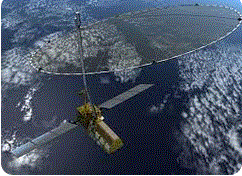Israeli Astro Physics Mission: ULTRASAT
An agreement on a space mission will soon be signed by NASA and Israel. According to the agreement, the United States will support Israel`s forthcoming ULTRASAT astronomy mission. The Israel Space Agency and Germany are actively developing the project. The geostationary orbit where Ultrasat will be operating. It will have a UV telescope on board. ULTRASAT`s primary goal is to search for UV signatures in space. It will specifically search for UV emissions from neutron star mergers and supernova explosions.
The weight of the satellite is 1,100 kg
To be launched in 2026
Operational time: three years
Purpose: To look for gravitational waves
Total Cost: 110 million USD.
The objectives of ULTRASAT match with the Astro 2020 survey of NASA. Under this, the US is looking for gravitational wave emissions from stellar and galactic clouds. UV is also a gravitational wave. The Astro 2020 is a decadal survey. It will track the course of Astronomy in the US and the world in 10 years. The mission will identify earth-like planets and is often called the successor of the Hubble Space Telescope. It has a Large UV – IR surveyor. It also looks for habitable zones in the outer space.
###
NASA-ISRO Joint Satellite – NISAR
The launch of the earth-observing satellite NISAR is scheduled for 2024. For NASA-ISRO Synthetic Aperture Radar, it is an acronym. SAR reconstructs landscapes in two dimensions and three dimensions. NASA and ISRO collaborated to create NISAR. NISAR just travelled to India from the NASA Jet Propulsion Laboratory in California.
NISAR is a three-year mission. A part of the NISAR satellite is developed on US soil. This part payload is now being transported to India’s U R Rao Satellite center in Bengaluru from JPL in California.
Radar systems in NISAR:
L – Band SAR: Designed and Created by JPL of NASA; Wavelength: 23 cm; Greater penetration to forests
S-Band SAR: Designed and created by ISRO; Wavelength: 12 cm; Used for heavy weather and bird detection.
###